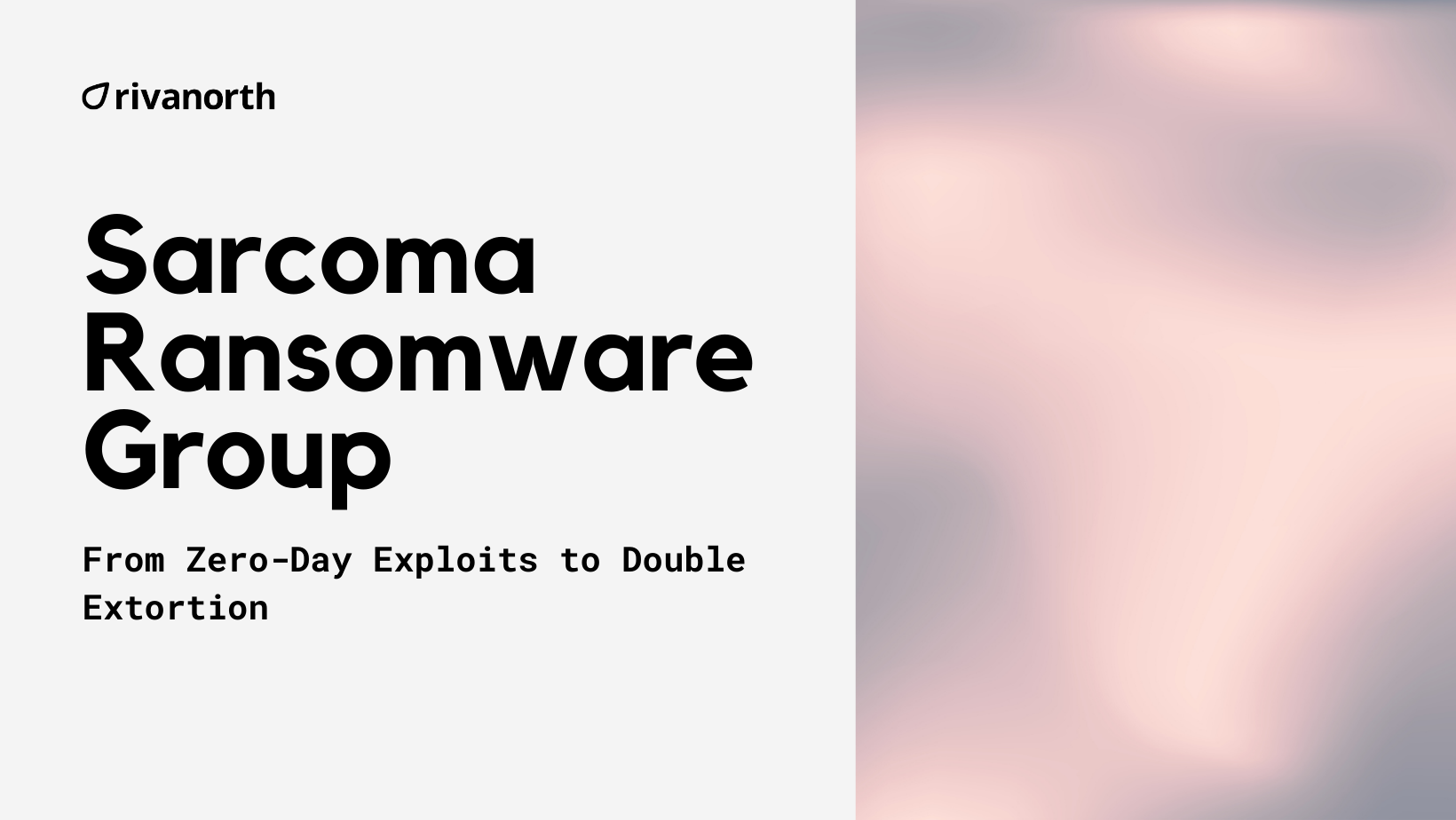Sarcoma Ransomware Group: From Zero-Day Exploits to Double Extortion
Read Time 3 mins | 09 April 2025

As the ransomware landscape continues to evolve, Sarcoma has quickly gained notoriety for its audacious tactics and wide ranging targets. While many criminal networks focus on large corporations, Sarcoma appears to cast a broad net, striking organisations of various sizes and sectors. Below, we explore what makes Sarcoma unique, offer a clearer understanding of how ransomware works, and detail known attacks on Australian and international victims, plus practical steps businesses can take to safeguard their operations.
What is Ransomware?
Ransomware is malicious software that cybercriminals use to encrypt a victim’s data, rendering critical files and systems inaccessible. Attackers then demand a ransom often paid in cryptocurrency in exchange for a decryption key. Modern ransomware groups may also threaten to expose stolen data if payment is withheld, a strategy known as “double extortion.” This high pressure tactic can coerce organisations into paying quickly to protect customer information and intellectual property. If you’d like a more in-depth look at ransomware’s inner workings, be sure to check our “What is Ransomware?” blog post.
Why Sarcoma is a Major Concern for Australian Businesses
Sarcoma stands out for its willingness to exploit zero-day vulnerabilities and its focus on industrial, manufacturing, and tech dependent firms. These attacks come at a time when Australian companies face strict data protection regulations and heavy financial penalties for non compliance. Under the Notifiable Data Breaches (NDB) scheme, businesses must disclose significant breaches of personal information a factor that can heighten the impact of a ransomware incident. Sarcoma’s global reach, combined with Australian specific compliance pressures, makes this group especially formidable for local enterprises.
Australian Victims So Far
Several Australian companies have reportedly fallen victim to Sarcoma, illustrating how versatile and damaging this group can be. One such case involved Sydney based The Plastic Bag Company, a plastic bag manufacturer that had crucial production data encrypted, leading to operational delays and reputational risks. Investigations suggested the attackers also attempted to exfiltrate sensitive customer and partner information, placing additional pressure on the company to negotiate.
Another known instance took place at MeshWorks, a steel fabricator specialising in bespoke metal solutions. The Sarcoma ransomware reportedly disrupted core design and production systems, putting custom orders on hold and raising concerns about potential supply chain knock on effects. Early findings pointed to a sophisticated intrusion method, reinforcing suspicions that Sarcoma might have access to advanced or custom built exploits.
The aftermath of these attacks involved not only technical recovery but also legal and regulatory considerations. Australian authorities place high importance on transparency and data breach notifications, often forcing companies to disclose incidents sooner than they might prefer, thus intensifying public scrutiny.
International Victims and Broader Reach
Sarcoma’s impact extends beyond Australia, with reported incidents in Asia and Eastern Europe. One high profile claim involves Unimicron, a major Taiwanese printed circuit board manufacturer whose global client list includes several tech giants. Although full details of the breach are still under investigation, the case highlights Sarcoma’s willingness to pursue large scale multinational targets.
In Bulgaria, Smart Media Group was reportedly compromised through a zero-day vulnerability. Security analysts believe this attack indicates Sarcoma’s deeper resource pool or access to undisclosed exploits a hallmark of more advanced cybercriminal syndicates. These international incidents underscore how quickly Sarcoma’s influence has grown and confirm that the group is far from being a localised threat.
Strengthening Defences: Dark Web Monitoring and Beyond
Building strong cybersecurity resilience is essential, whether you’re an Australian manufacturer or a global enterprise. Key measures include regular patch management, staff training against phishing, and the adoption of robust backup strategies. However, these standard approaches are most effective when coupled with proactive intelligence, such as dark web monitoring.
By scanning underground forums and marketplaces for stolen credentials or leaked data, organisations can detect potential compromises early. This kind of intel can make the difference between an isolated security event and a full scale breach. Oko, our dark web monitoring software, provides that level of early warning, helping businesses clamp down on threats before they escalate.
Final Thoughts
The Sarcoma ransomware group illustrates just how dynamic and borderless cyber threats have become. Australian companies in particular must navigate stringent regulations and maintain public trust, factors that Sarcoma appears willing to exploit. Whether the target is a steel fabricator in New South Wales or a global tech supplier in Taipei, ransomware can bring operations to a standstill in moments. By understanding how groups like Sarcoma operate and reinforcing defences with solutions like dark web monitoring, organisations can stay better protected in today’s high stakes cybersecurity landscape.
Join Our Newsletter